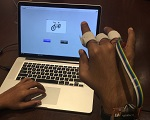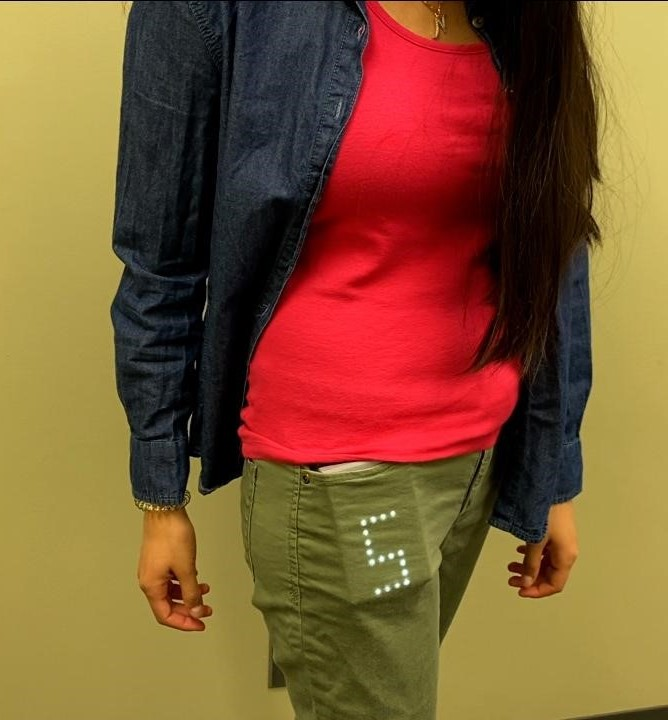 Expanding Side Touch Input on Mobile Phones: Finger Reachability and Two-Dimensional Taps and Flicks using the Index and Thumb, ISS 2020
Expanding Side Touch Input on Mobile Phones: Finger Reachability and Two-Dimensional Taps and Flicks using the Index and Thumb, ISS 2020 Yen-Ting Yeh, Quentin Roy, Antony Albert Raj Irudayaraj, Daniel Vogel
The edge of the phone can be used triggering touch input. An initial experiment studied the reachability of their fingers to different areas on the phone. Then, we ran two separate experiment to evaluate tapping performance and flicking gestures along the edge of phone performed using the thumb and index finger.

 Haptic Learning of Freehand Semaphoric Gestures, UIST 2016
Haptic Learning of Freehand Semaphoric Gestures, UIST 2016  PocketView: Through-Fabric Information Displays, UIST 2021
PocketView: Through-Fabric Information Displays, UIST 2021  Hapticclench: Squeezing sensations using shape memory alloys, UIST 2019
Hapticclench: Squeezing sensations using shape memory alloys, UIST 2019